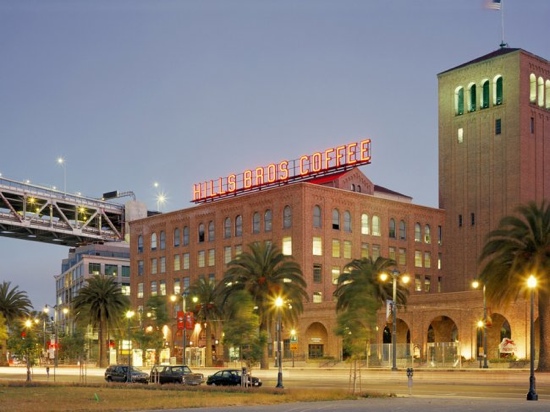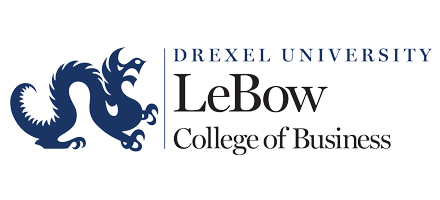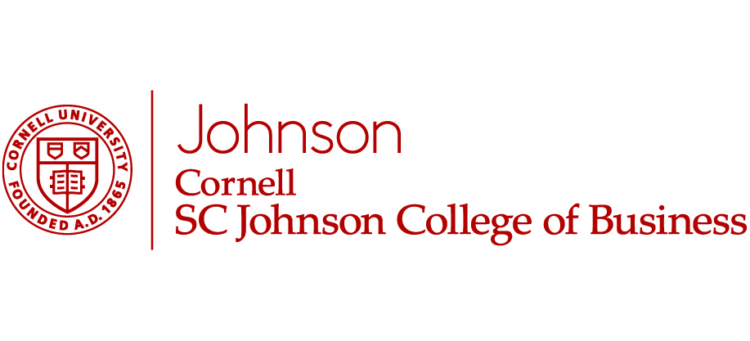
The most telling detail of Wharton’s newly opened West Coast campus in San Francisco is the amount of space the prestige business school acquired: Enough room to double the size of its Executive MBA program in California, offer a full menu of ongoing executive education courses, and serve as a West Coast hub for full-time MBA students in Philadelphia who want to spend a semester near Silicon Valley.
As Doug Collom, vice dean of Wharton/San Francisco, puts it: “We’re out of stealth mode. We’ve got a killer space. When the students came out of the elevators for the first time in January, their eyes were as big as saucers.”
No wonder. These are amazingly impressive digs. Beyond the sweeping views of San Francisco Bay and the Bay Bridge, this is a place that most business schools would be happy to call their only home—never mind an outpost 3,000 miles from the main campus.
The school went from 25,000 square feet of space on two floors in the Folgers’ Building in San Francisco’s financial district with no significant signage to 33,000 square feet on a single floor in the Hills Brothers Coffee building with marquee-like billing on the Embarcadero, a couple of minutes from the city’s iconic ferry terminal building.
Wharton/San Francisco now boasts two tiered-classrooms with 75 seats each and another tiered-classroom with 160 seats. There are 16 group study rooms, a half dozen faculty offices, and a 160-person dining room with those utterly spectacular views of the Bay.
The place is loaded with world-class, state-of-the-art technology, including videoconferencing capability to beam meetings back to the East Coast and vice versa. The classroom technology, in fact, is so new that the West Coast campus will become something of a laboratory for the main campus to test out new equipment before spreading it across the entire school, says Collom.
Collom, a former partner at the law firm Wilson Sonsini Goodrich & Rosati, came aboard as vice dean of Wharton/San Francisco three years ago. He had been an adjunct faculty member at Wharton since 2002. Collom smartly hired Bernadette Birt as executive director of the West Coast campus in 2010. She had led Northwestern University’s Kellogg School EMBA program for many years and now leads a full-time staff of some 16 people for Wharton in San Francisco.
The school originally ventured west in the early 2000s at the urging of several prominent alumni, including Lew Platt, then CEO of Hewlett Packard, and David Pottruck, then CEO of Charles Schwab. With some 8,000 Wharton alums on the West Coast and roughly 4,500 in Northern California alone, it seemed like a good bet—and one that has clearly paid off. Wharton’s annual revenues from its West Coast operations already exceed $15 million. Within another year or two, Wharton’s West Coast operation will easily surpass $20 million in annual revenue.
From its perch in San Francisco, the school sees itself in competition not only with Berkeley’s Haas School and Stanford’s Graduate School of Business but with business schools from Los Angeles to Phoenix and the Pacific Northwest.
The inaugural class of 55 executive MBA students entered in 2001. Since then, Wharton’s West Coast campus has graduated some 800 EMBAs and held several custom executive education courses for nearby companies, including Google. The latest EMBA class totals 96 students. The plan is to increase the size of the EMBA class here to about 115, equal to Wharton’s EMBA program in Philadelphia, and to significantly ramp up open-enrollment exec ed programs here.
Though Wharton had hoped to establish a semester exchange program its full-time MBA students who wanted more of a deep dive into Silicon Valley, it never really occurred. However, this fall for the first time as many as 40 full-time MBAs will move west for a semester to take their elective courses in California, says Anjani Jain, who oversees Wharton’s EMBA programs. That gives Wharton’s mainstream MBA program a formidable advantage over some of its most prominent rivals, including Columbia Business School, Chicago Booth, MIT Sloan, and Dartmouth College’s Tuck School.




